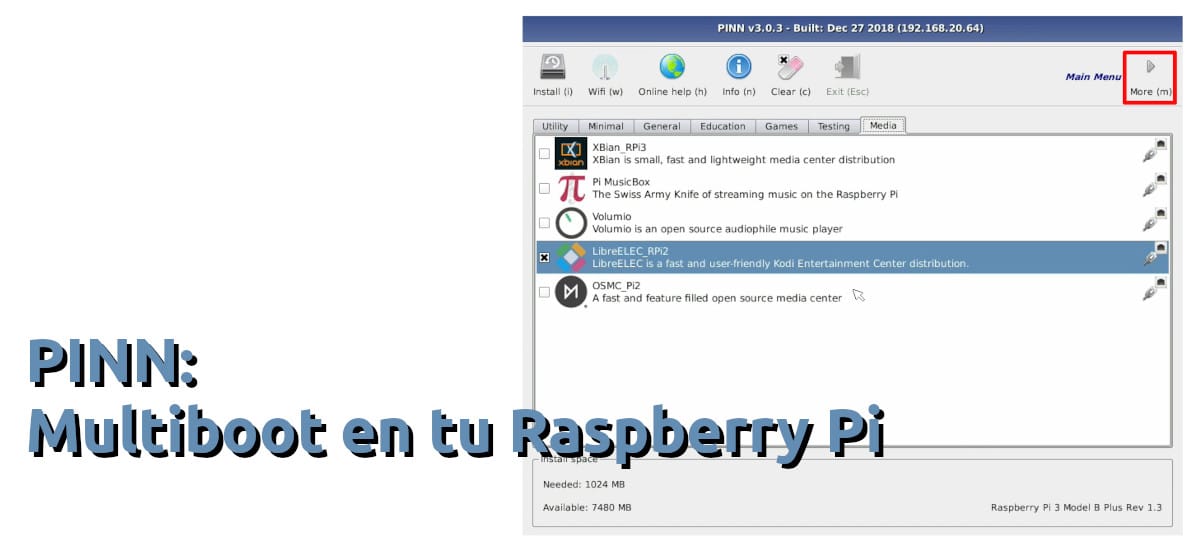
Considering that the Raspberry Pi has an ARM SoC, finding the perfect operating system for it is not an easy task. There is Raspberry Pi OS, formerly Raspbian, but it is based on Debian and the software is not very up to date. Other systems like Manjaro update sooner, but, for example, to view DRM content you have to install a special Chromium container that does not offer the best of qualities. Twister OS comes close to that perfection, as it has RetroPie and WINE installed by default, but PINN offers us something better: the multiboot.
The name "PINN", or more specifically where it comes from, is somewhat reminiscent of WINE: "WINE" stands for "Wine Is Not an Emulator", and "PINN" stands for "PINN Is Not Noobs". And it is that this software is very reminiscent of the Raspbian installation system until Raspberry Pi Imager was launched: to create the installation SD we have to format the card in FAT32 and copy all the files to the root of it. In addition, we allows multiboot, which is the same as dual boot, but we can install many more than two systems on the same SD.
With PINN we don't have to choose; we can put them all
At Lóleo Eventos, project page we can see some details, such as how PINN Lite is installed on an SD card. So far it is the same as NOOBS, but things change when we put the card in the Raspberry Pi and start it. For starters, there are many more operating systems to choose from, and also has tools to replace or repair one installation for another, among other things like the beta of Rasbperry Pi OS 64bits offers us.
PINN is not a new tool, and if we also label it a successor it is because NOOBS no longer exists as such. It has been in development for some time, but it still needs to improve on some things. For example, if we use a 128GB card and we put 4 operating systems, it will automatically create 4 partitions of 32GB. If we want to change the size, we have to go to /settings/installed_os.json, see the list of installed systems with the assigned partitions, remove the card, put it in another computer and resize them with GParted. Another option is to go to this link (It is advisable to visit it to see all the available systems), indicate the size of the card in MB, choose the board on which we are going to use it, tell it which operating systems we want to install, move some sliders to choose the size of each partition and replace the file recovery.cmdline from the original PINN folder for which we will download from pinn.mjh.nz.
It should be noted that PINN offers us many operating systems, among which is Manjaro or, new at the time of writing this article, the Twister OS how well the Raspberry Pi fits. The Android and Android TV versions of Konstakang are also available, who is in charge of updating Lineage OS to the newest versions, and on what we wrote here a few months ago.
PINN allows us to also install Android
PINN is a great tool that will avoid us having to change the SD cards if we want to use Android and Twister OS, for example, on the same SD card. Of course, if we want to use many operating systems it is worth choosing a fast SD card with large storage, something can increase the price of the equipment. The good thing is that we will not have to go taking and putting cards.